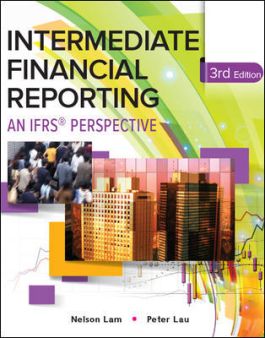eBook Intermediate Financial Reporting An IFRS, 3rd Edition
- Access the eBook anytime, anywhere: online or offline
- Create notes, flashcards and make annotations while you study
- Full searchable content: quickly find the answers you are looking for
Part I conceptual and regulatory framework
1 Financial Reporting and International Financial Reporting Standards 3
2 Conceptual Framework for Financial Reporting 21
Part II elements of financial statements —
assets
3 Property, Plant and Equipment 49
4 Leases 79
5 Investment Property 162
6 Intangible Assets 198
7 Borrowing Costs 242
8 Impairment of Assets 270
9 Inventories 315
Part III elements of financial statements —
liabilities, equity, income and expenses
10 Revenue and Construction Contracts 351
11 Revenue from Contracts with Customers 409
12 Employee Benefits 513
13 Income Taxes 562
14 Provisions and Contingencies 609
Part IV financial instruments
15 Financial Instruments — An Introduction 641
16 Financial Assets 669
17 Financial Liabilities and Derecognition 783
18 Financial Instruments — Presentation and Disclosure 821
Part V presentation of financial statements
and related topics
19 Presentation of Financial Statements 885
20 Accounting Policies, Changes in Accounting Estimates and Errors 951
21 Events after the Reporting Period 981
22 Non-current Assets Held for Sale and Discontinued Operations 1010
23 The Effects of Changes in Foreign Exchange Rates 1046
24 Statement of Cash Flows 1074
25 Fair Value Measurement 1108
Index 1167
This updated edition of Intermediate Financial Reporting explains the financial reporting concepts, accounting treatments and requirements, and preparation and presentation of financial statements encountered at the corporate or individual entity level by using the most updated International Financial Reporting Standards (IFRSs), including the latest IFRSs on financial instruments, revenue from contracts with customers, and leases.
This book is suitable for students, lecturers and practicing accountants. Students and lecturers should find this a good textbook for undergraduate and postgraduate intermediate and advanced accounting and financial reporting courses. Users and preparers of financial reports will find the concepts and explanations useful in their daily work, and they can use the book as a guide in analysing, auditing and preparing their financial reports.

